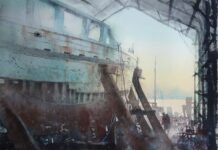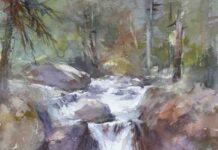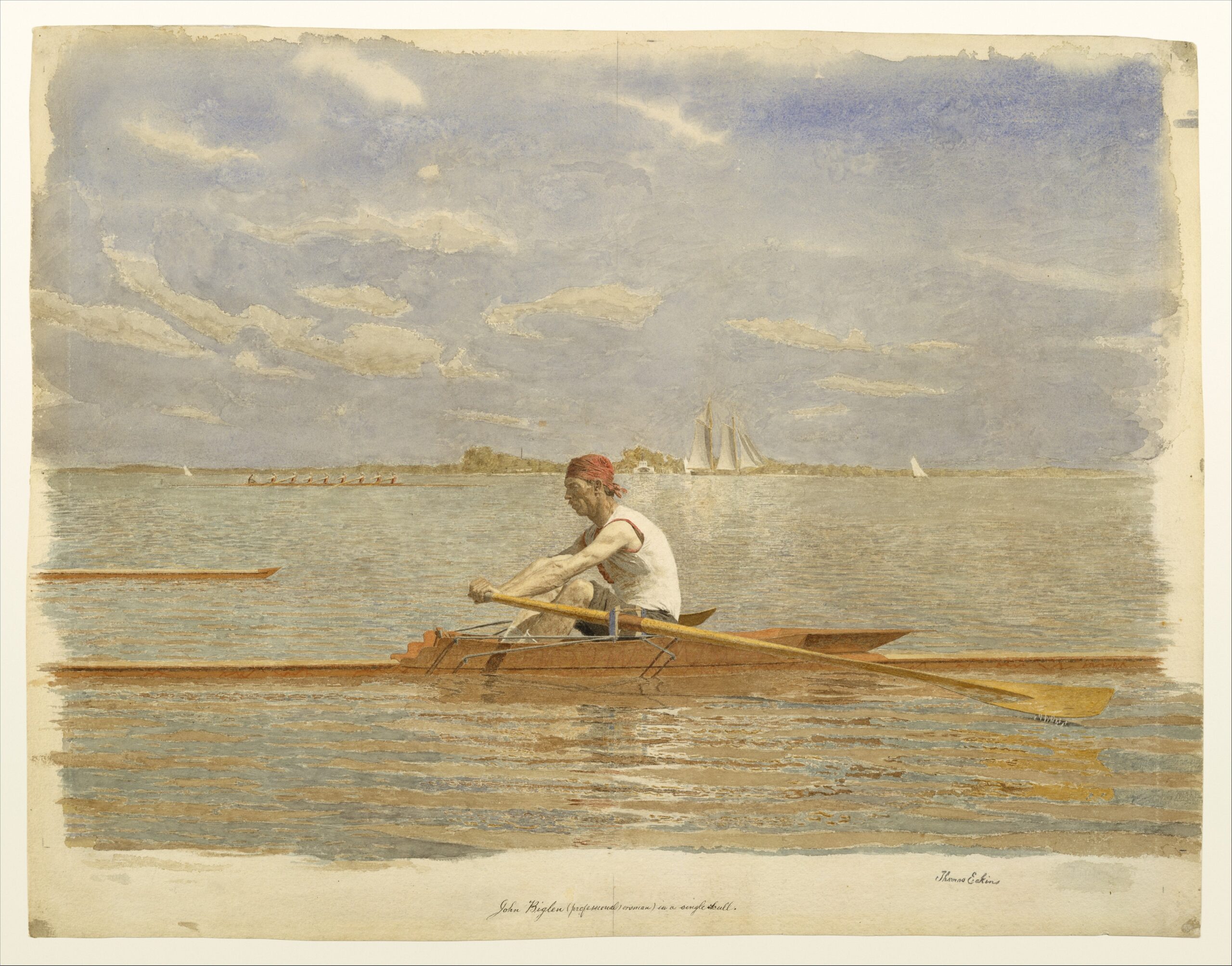
In 1870, after five years of study in Europe, Thomas Eakins (American, 1844–1916) returned to his hometown of Philadelphia and set up shop as a professional artist. Choosing subjects drawn from his own experiences, Eakins sought to use what he had learned about constructing a composition and painting the human figure.
As part of this exploration, he executed a series of exhibition watercolors, which demonstrated his particular interest in sporting themes. In this way, he introduced the landscape into his work. Although he painted the scenes in the studio, he used color studies as references for the images.
An amateur rower, Eakins knew accomplished oarsmen, including the brothers John and Bernard Biglin, who became his preferred models.
In one series of works, Eakins studied John Biglin rowing under strong sunlight. Here, Biglin is seen in profile, his arms extended at the end of a backward stroke. The artist sent the watercolor to Jean-Léon Gérôme, his former teacher in Paris. Gérôme wrote back, “Your watercolor is entirely good, and I am very pleased to have in the New World a pupil such as you who does me honor.”
OTHER EAKINS’S WATERCOLORS THAT FEATURE THE FIGURE IN A LANDSCAPE
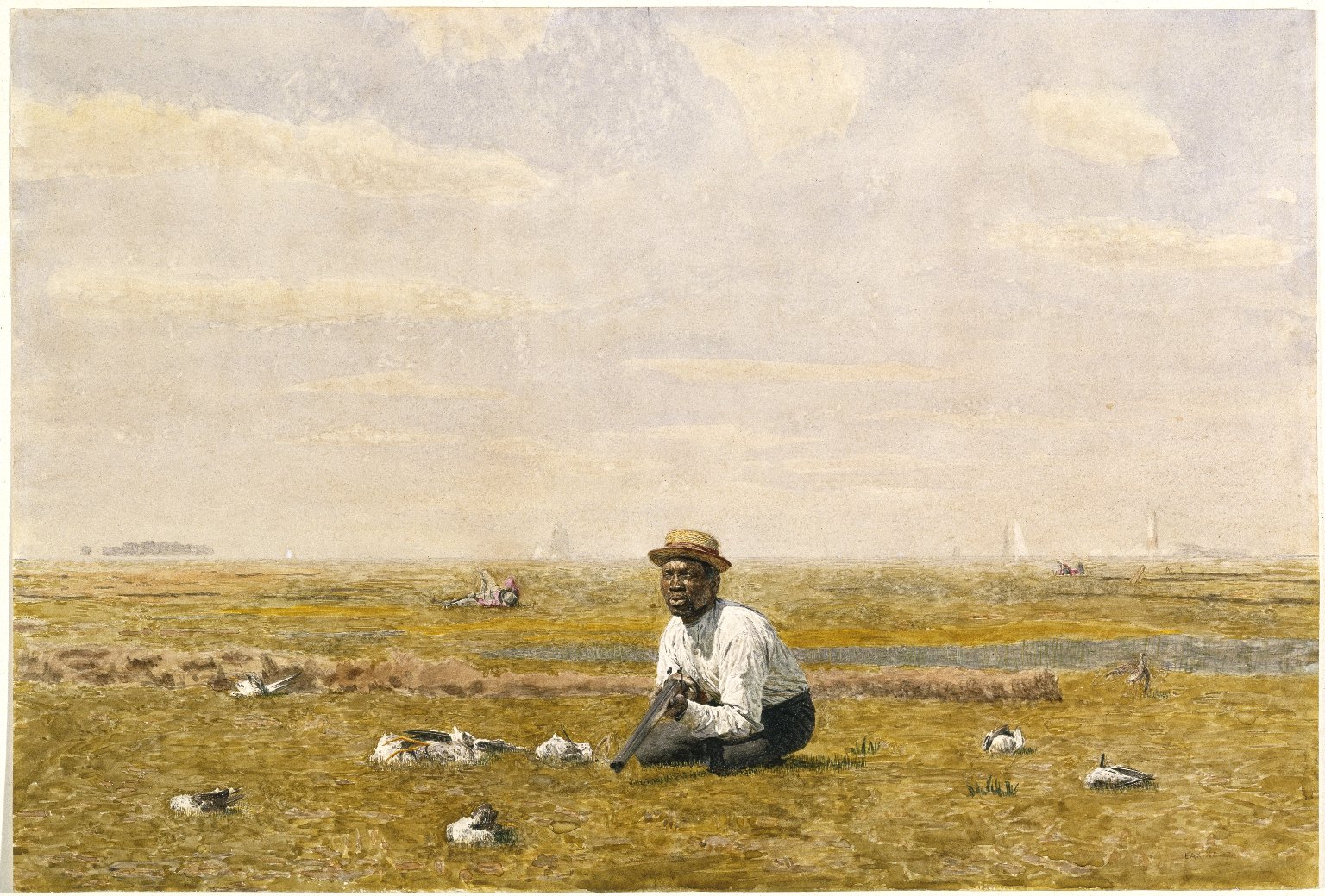
In this bird-hunting scene set in the marshes of southern New Jersey, Eakins used dry, tightly controlled brushstrokes to model his central figure and more fluid washes for the landscape. While the subject matter and academic approach (including extensive preparatory studies) parallel his work in oil, the artist preferred watercolor for this sun-drenched picture because it allowed him to paint “in a much higher key with all the light possible.”
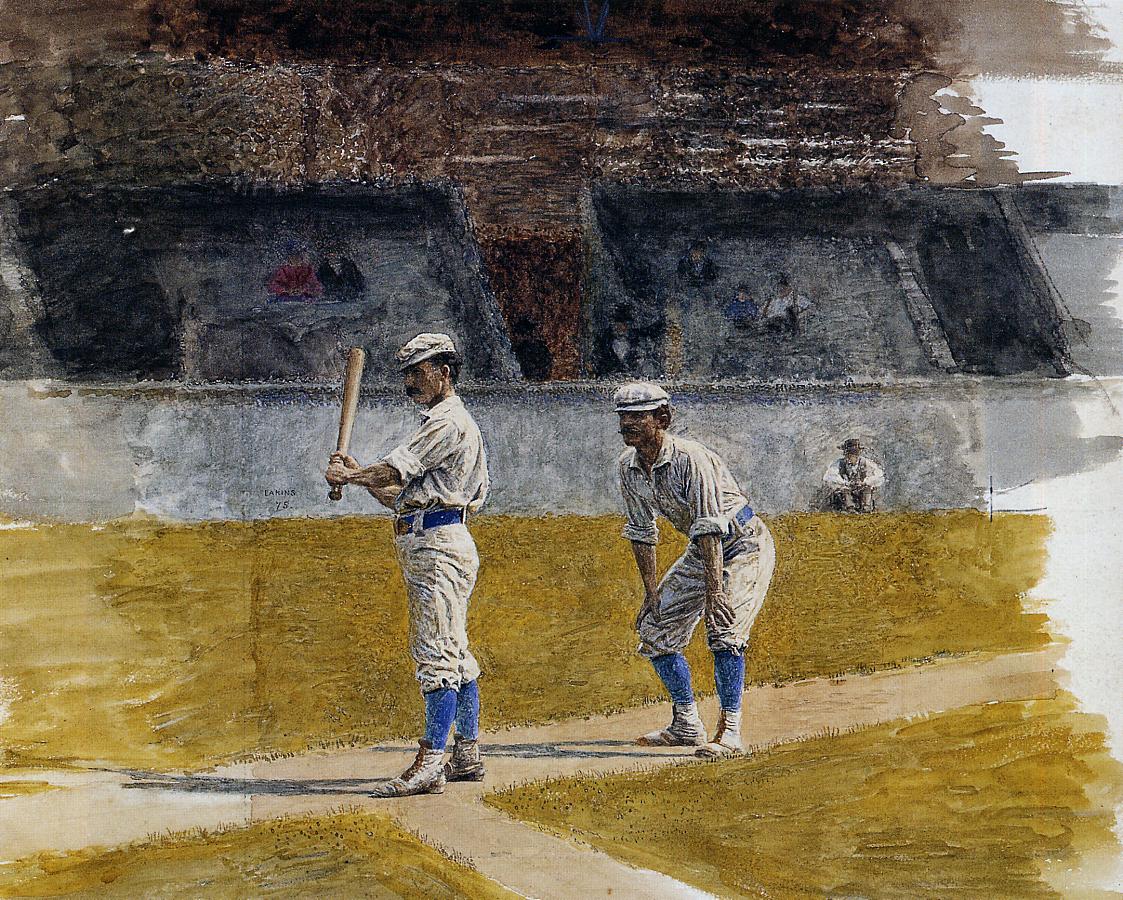
In a letter to artist Everett Shinn, Eakins pointed out that the ballplayers were Wes Fisler and John Clapp of the Athletics, a Philadelphia club, at practice. They were “very fine in their build,” he told Shinn, and the scene would “admit of fine figure painting.” For this piece, the artist applied tiny brushstrokes of color in many thin layers.

